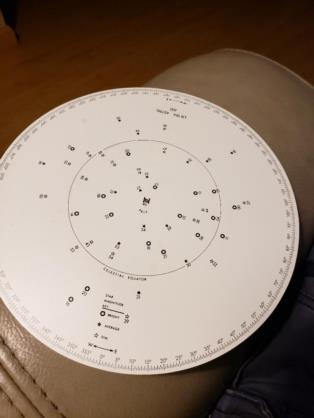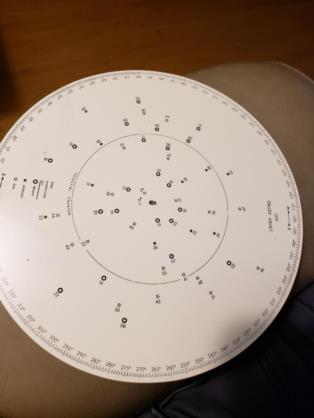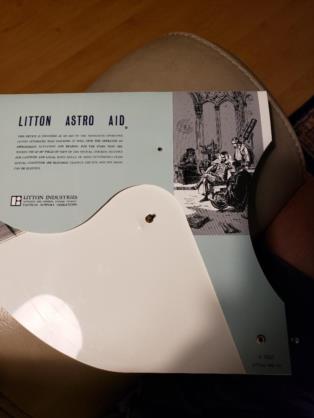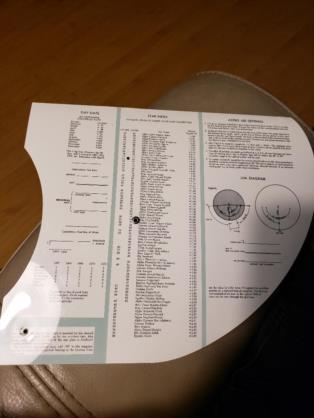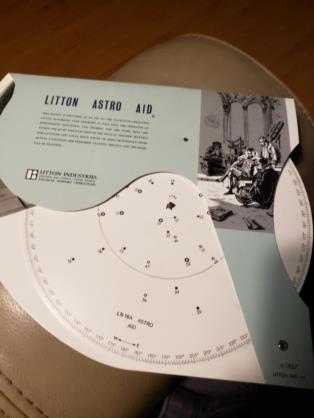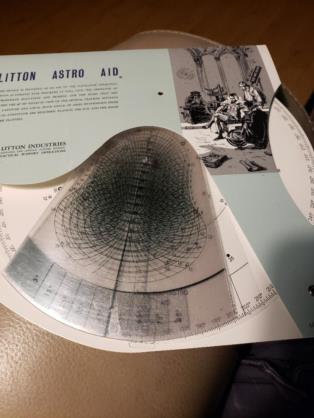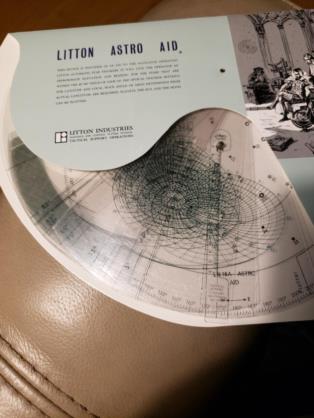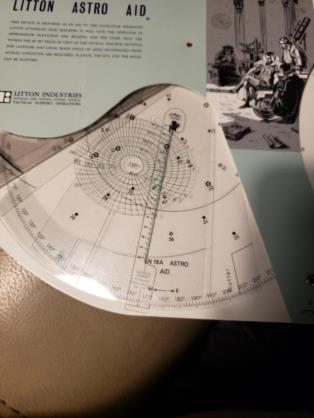
NavList:
A Community Devoted to the Preservation and Practice of Celestial Navigation and Other Methods of Traditional Wayfinding
From: Thomas Spidle
Date: 2019 Jun 30, 14:54 -0500
On June 30, 2019 at 1:31 AM Gary LaPook <NoReply_LaPook@navlist.net> wrote:
Since we have been discussing star finders, heer is another example. It uses the same methodology as the others but is designed for use with automatic star tracker systems, made by Litton, that do the celestial navigation automatically on our B-52's, B-2's, etc. These were used to align the star trackers so that they aquired the correct stars. It does not have complete overlays but only triangular shaped leaves and these were mounted on an offset pivot. In use, you swing the appropriate latitude leaf into place and mount it on the central pivot used for the star base. The leaves only have curves for altitudes above 40 degrees. The stars are not named on the star base, only numbered, but are named on the reverse side of the device in order of decreasing magnitude based on the sensitivity of the star tracker's sensors. Just another rare star finder. Interestingly, the star bases are all different sizes, HO 2102 , 10.8 cm; CP-300, 10.0 cm; and the Litton, 10.4 cm.
gl
